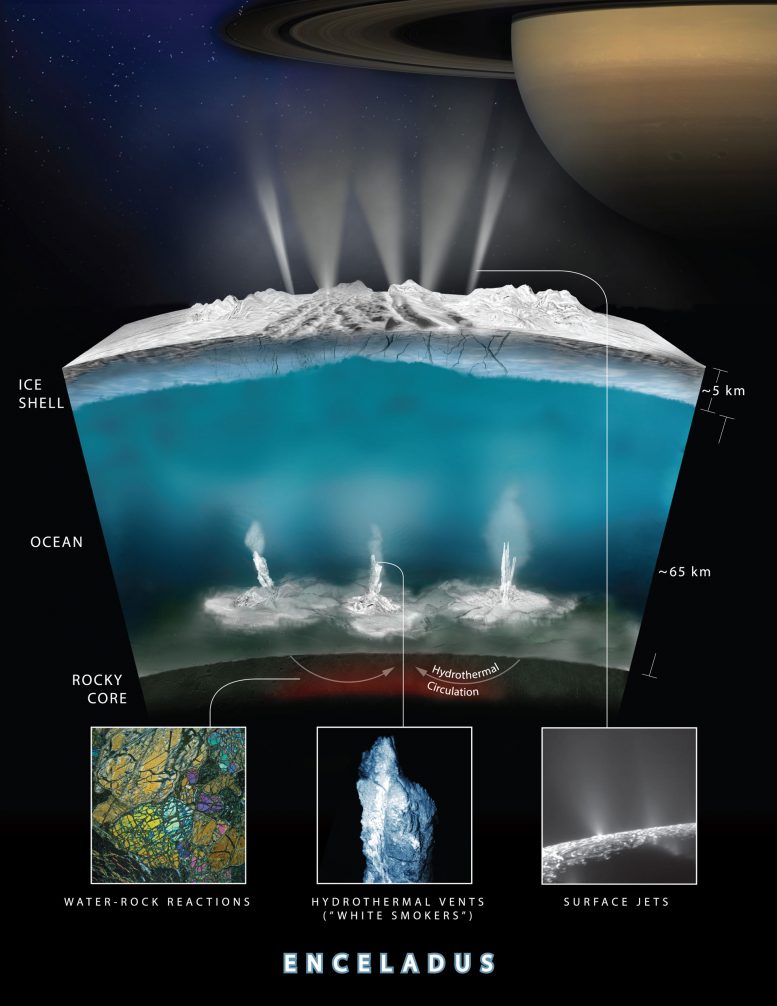COMs in Enceladus
Category : Astrochemistry General News
An article in Nature reported the observation of astrophysically complex organic molecules (COMs) in cryo plumes ejected from the interior water ocean of Enceladus, one of Saturn satellites. The composition of the plumes was detected using mass spectrometry during a flyby of the spacecraft Cassini, before it was destroyed in 2017. Most of ice particles ejected from Enceladus are almost pure water, but a 1% is rich in organic molecules, some of them up to 200 amu. These results are the first evidence of complex organics from an extraterrestrial water ocean. The identity of these organic compounds is not clear, but they could contain carbon (C7 to C15), oxygen and eventually nitrogen. A prominent peak was associated to cationic forms of the benzene ring. Enceladus seems the only member of the solar system with a water ocean, an internal energy source and complex organics, apart from our planet.
https://www.youtube.com/watch?v=npL48OfebSU

Picture Credits: NASA/JPL-Caltech/Southwest Research Institute











Recent Comments